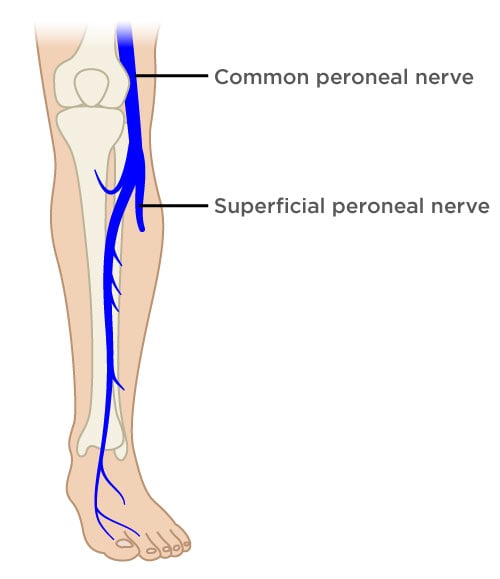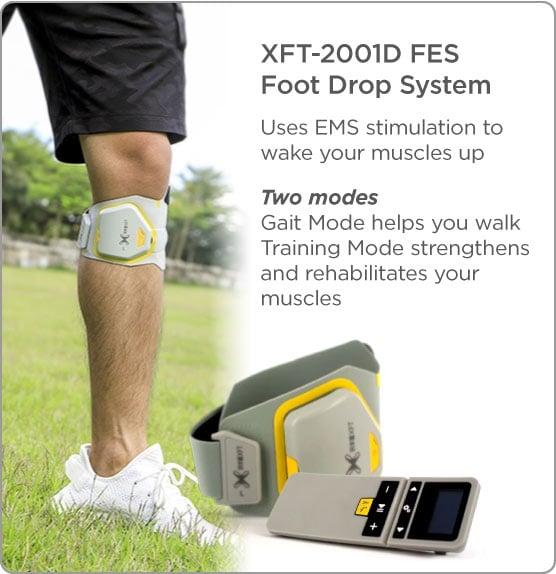
 Drop foot, also known as foot drop, is a medical condition affecting a person’s ability to lift the foot and toes when walking. An inability to raise the foot when walking can lead to trips and falls, both when in the home and when outside. Foot drop occurs when the peripheral nerves that control the feet become damaged or compressed and causes weakness or paralysis of the muscles that pull the foot towards the shin. It can cause uneven walking posture – this can be embarrassing or even result in serious injuries. Foot drop is a sign of an underlying problem rather than a condition itself. It can be muscular, caused by nerve damage in the leg, or the result of a brain or spinal injury or a neurological condition such as MS or Parkinson's. It usually only affects one foot, but both feet can be affected depending on the cause. It can be temporary or permanent.
Drop foot, also known as foot drop, is a medical condition affecting a person’s ability to lift the foot and toes when walking. An inability to raise the foot when walking can lead to trips and falls, both when in the home and when outside. Foot drop occurs when the peripheral nerves that control the feet become damaged or compressed and causes weakness or paralysis of the muscles that pull the foot towards the shin. It can cause uneven walking posture – this can be embarrassing or even result in serious injuries. Foot drop is a sign of an underlying problem rather than a condition itself. It can be muscular, caused by nerve damage in the leg, or the result of a brain or spinal injury or a neurological condition such as MS or Parkinson's. It usually only affects one foot, but both feet can be affected depending on the cause. It can be temporary or permanent.
There is a very long list of drop foot causes, but at the top of it is peroneal nerve injury. The peroneal nerve is a branch of the sciatic nerve that wraps around the knee and runs down the leg into the foot
A few examples of ways peroneal nerve damage might occur include:
• Trauma
• Knee replacement surgery (or other surgery relating to the joint)
• Achilles’ tendon repair surgery
• A stroke that leaves you in a position that pressures the peroneal neve for an extended period
• Dislocated Kneecap
• Fractured shin bone
• Crossing the legs or squatting for long periods of time Unfortunately, some foot drop symptoms can also come with other diseases like ALS or MS. if you have, or suspect you have, foot drop, it’s important to make an appointment with your doctor/a medical professional.
That list includes the following:
• Multiple sclerosis (MS)
• Amyotrophic lateral sclerosis (ALS)
• Cerebral Palsy
• Charcot-Marie-Tooth Disease
• Muscular dystrophy
• Polio Parkinson’s disease Treatment for foot drop depends on the cause.
If the cause is successfully treated, foot drop might improve or even disappear. If the cause can't be treated, foot drop can be permanent. Because foot drop can increase your risk of tripping and falling, consider taking these precautions around your house:
• Keep all floors clear of clutter.
• Avoid the use of throw rugs.
• Move electrical cords away from walkways.
• Make sure rooms and stairways are well-lit.
• Place fluorescent tape on the top and bottom steps of stairways.

Treatment for foot drop might include:
Electrical Muscle Stimulation
A clever way of treating foot drop is via Functional Electrical Stimulation (FES), which is a type of Electrical Muscle Stimulation (EMS). Small electrical currents stimulate selected nerves and muscles to make them contract. When used for foot drop, FES targets the nerves at the top of the foot. This causes the foot to flex upwards and stops it from dragging on the ground. The main purpose of an electrical muscle stimulation device is to stimulate the relevant nerves in the foot so that they contract and don’t allow the foot to drop. Two self-adhesive electrode patches are placed on the skin. One is placed close to the nerve supplying the muscle and the other over the centre of the muscle. The stimulator is triggered by a sensor in the shoe and is activated every time your heel leaves the ground as you walk. This type of device is designed to mimic the natural response of the body to walking. View our range here
Braces or splints
There are many different braces and splints available on the market. Each brace is tailored towards a different part of the foot and ankle. Although it has many different names, It’s the product itself you need to focus on. Whatever name is used, they are a popular form of treatment for drop foot, offering a patient the confidence and support they need to remain active. A brace on your ankle and foot or splint that fits into your shoe can help hold your foot in a normal position.
Physical therapy
Exercises that strengthen your leg muscles and help you maintain the range of motion in your knee and ankle might improve gait problems associated with foot drop. For some, physical therapy to strengthen weak feet and ankle muscles can improve the symptoms of foot drop by enhancing your balance, broadening your range of motion, and keeping your tissues limber. Stretching exercises are particularly important to prevent the stiffness in the heel. Foot physiotherapy exercises are not a quick fix. Drop foot exercises are most effective when a patient commits to doing them regularly and on a long-term basis.

